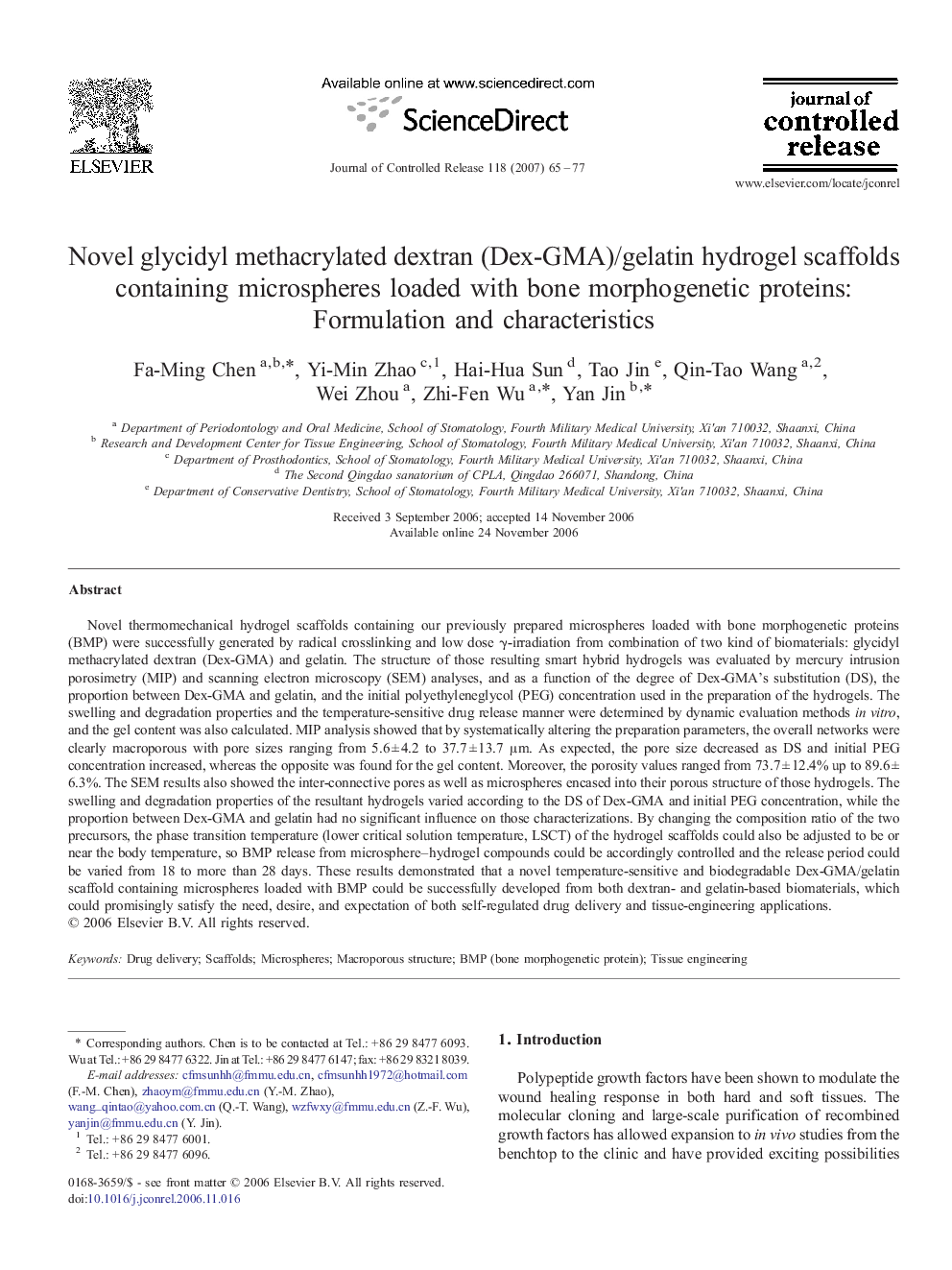| کد مقاله | کد نشریه | سال انتشار | مقاله انگلیسی | نسخه تمام متن |
|---|---|---|---|---|
| 1427330 | 986859 | 2007 | 13 صفحه PDF | دانلود رایگان |

Novel thermomechanical hydrogel scaffolds containing our previously prepared microspheres loaded with bone morphogenetic proteins (BMP) were successfully generated by radical crosslinking and low dose γ-irradiation from combination of two kind of biomaterials: glycidyl methacrylated dextran (Dex-GMA) and gelatin. The structure of those resulting smart hybrid hydrogels was evaluated by mercury intrusion porosimetry (MIP) and scanning electron microscopy (SEM) analyses, and as a function of the degree of Dex-GMA's substitution (DS), the proportion between Dex-GMA and gelatin, and the initial polyethyleneglycol (PEG) concentration used in the preparation of the hydrogels. The swelling and degradation properties and the temperature-sensitive drug release manner were determined by dynamic evaluation methods in vitro, and the gel content was also calculated. MIP analysis showed that by systematically altering the preparation parameters, the overall networks were clearly macroporous with pore sizes ranging from 5.6 ± 4.2 to 37.7 ± 13.7 μm. As expected, the pore size decreased as DS and initial PEG concentration increased, whereas the opposite was found for the gel content. Moreover, the porosity values ranged from 73.7 ± 12.4% up to 89.6 ±6.3%. The SEM results also showed the inter-connective pores as well as microspheres encased into their porous structure of those hydrogels. The swelling and degradation properties of the resultant hydrogels varied according to the DS of Dex-GMA and initial PEG concentration, while the proportion between Dex-GMA and gelatin had no significant influence on those characterizations. By changing the composition ratio of the two precursors, the phase transition temperature (lower critical solution temperature, LSCT) of the hydrogel scaffolds could also be adjusted to be or near the body temperature, so BMP release from microsphere–hydrogel compounds could be accordingly controlled and the release period could be varied from 18 to more than 28 days. These results demonstrated that a novel temperature-sensitive and biodegradable Dex-GMA/gelatin scaffold containing microspheres loaded with BMP could be successfully developed from both dextran- and gelatin-based biomaterials, which could promisingly satisfy the need, desire, and expectation of both self-regulated drug delivery and tissue-engineering applications.
Journal: Journal of Controlled Release - Volume 118, Issue 1, 12 March 2007, Pages 65–77